Remember when visiting someone’s home meant actually seeing inside their living room instead of just the carefully curated background of a video call? Back in our day, living rooms weren’t just where we gathered – they were showcases of our families’ personalities, achievements, and sometimes questionable decorating choices. These familiar sights could tell you everything from how formal the household was to whether children’s comfort ranked above furniture preservation!
1. The Console Television
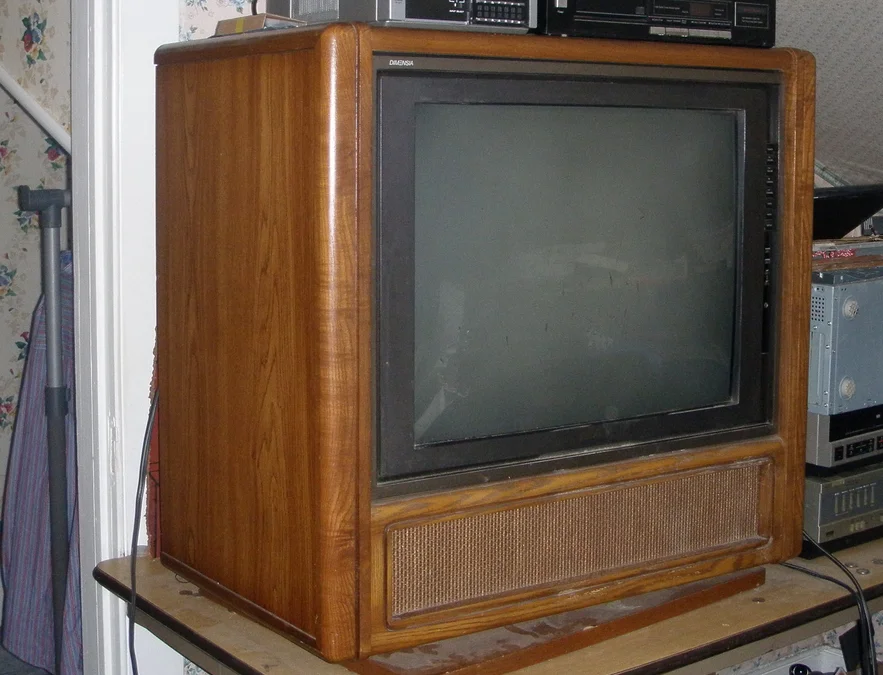
Commanding center stage in every living room was the wooden console television – less an appliance than a piece of furniture that families purchased on installment plans and kept for decades. These mahogany or walnut behemoths housed tiny screens in massive cabinets that often featured sliding doors to hide the TV when “respectable company” visited. The top surface served as a display shelf for family photos, decorative clocks, and artificial flowers, creating a shrine to both technology and domesticity. CBS News turns the dial on how these gigantic TV sets have evolved over the years.
Adjusting these sets required genuine physical effort – from turning the UHF/VHF knobs with satisfying clicks to fiddling with rabbit ear antennas wrapped in strategic bits of aluminum foil. The television’s warm-up period (accompanied by that distinctive electrical smell) created a sense of anticipation missing from today’s instant entertainment, and the shared experience of gathering around a single screen made TV watching a genuinely social activity. After-school specials, Saturday morning cartoons, and must-see TV events like “The Wonderful World of Disney” turned these glowing boxes into the undisputed hearths of modern family life.
2. The Uncomfortable “Company” Couch

Every home maintained at least one formal seating arrangement that was explicitly reserved for guests – usually a plastic-covered sofa with cushions so firm they might as well have been stuffed with bricks. These untouchable furniture pieces came in ambitious patterns (often floral) or solid colors (frequently avocado green or harvest gold) and were positioned against the living room’s main wall like museum pieces. Children were routinely warned not to sit on these sacred objects except during holidays or when the minister came to visit, ensuring the plastic covers would remain pristine for hypothetical future generations. As noted by Homeleon, slip covers in general have a fascinating history of covering and transforming the couch.
The accompanying throw pillows were equally non-functional – often featuring scratchy embroidery, tassels, or beadwork that made them weapons rather than comfort items. Some homes elevated the untouchable couch concept by adding plastic runners on carpets leading to this formal seating area, creating what amounted to a “look but don’t touch” furniture exhibit within the living space. The cruel irony was that these sofas were almost always visible from the entryway, drawing visitors toward comfort that would prove illusory the moment they sat down and stuck to the plastic covering.
3. The Wall-to-Wall Carpet
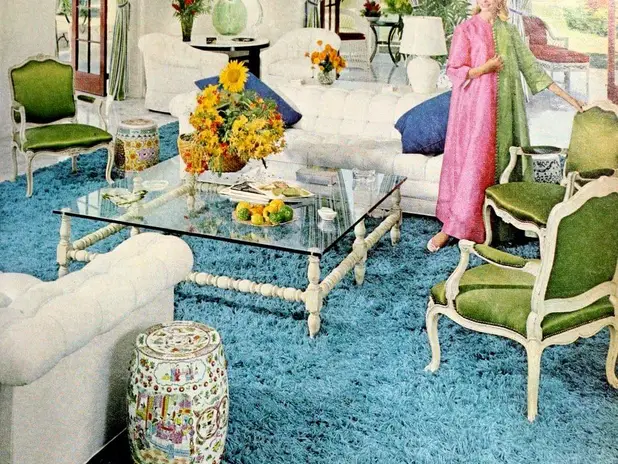
Plush carpeting in ambitious colors and patterns stretched from baseboard to baseboard, installed with the expectation it would remain in place for at least 20 years. These textile investments came in shag, sculptured, or Berber varieties, often in colors that defied nature – sunset orange, deep purple, or the particularly popular harvest gold that somehow coordinated with every appliance manufactured between 1968 and 1977. Regular vacuuming was elevated to religious ritual, with visible vacuum lines considered a sign of domestic prowess and proper household management. For those who still have this fluffy feature in their homes, This Old House explores whether wall-to-wall carpeting is enjoying a comeback today.
The carpet’s pristine condition was maintained through strict rules about shoes (removed at the door), beverages (never carried without coasters underneath), and appropriate activities (absolutely no crafting projects or model building). Some households used transparent plastic carpet runners to protect high-traffic areas, creating squeaky pathways that announced everyone’s movements throughout the home. The purchase of new wall-to-wall carpeting ranked just below buying a car in terms of family financial decisions, with color selection discussions stretching over multiple weekends and carpet samples being viewed under various lighting conditions before final commitment.
4. The Recliner (Dad’s Chair)
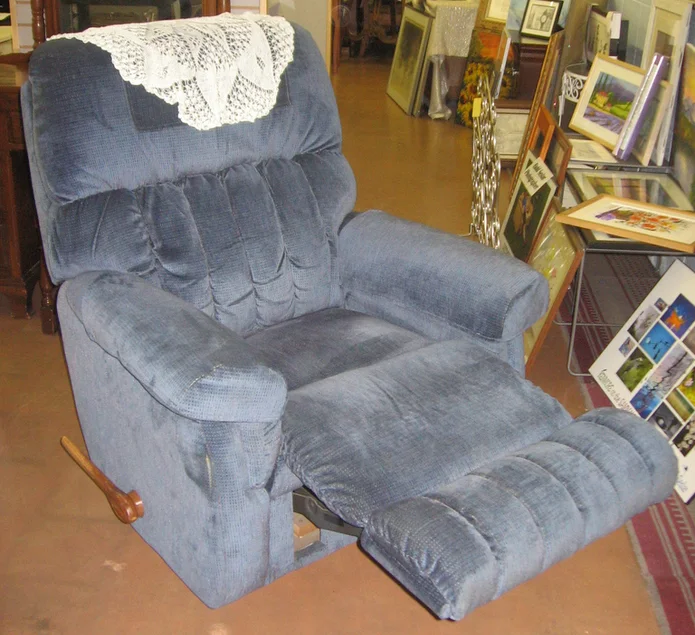
Every living room featured one supremely comfortable chair that was universally understood to belong to Dad, regardless of whether this ownership was officially documented. These recliners – often in naugahyde or other man-made materials that withstood years of use – featured side pockets for TV guides and remote controls, with arms permanently indented from thousands of evenings spent in exactly the same position. The chair’s mechanism might squeak from years of extending and retracting, but suggesting replacement would be met with horror – the chair had reached that perfect broken-in state that made it irreplaceable.
The throne-like status of this seating was established through unspoken family law – if Dad entered the room while someone else occupied his chair, they would immediately vacate it without comment or complaint. Side tables positioned within arm’s reach held essentials like ashtrays (in smoking households), TV remotes secured with electrical tape over battery compartments, and beverage coasters that had been collected from various restaurants or gifted during holidays. The recliner’s position provided optimal television viewing while allowing Dad to monitor household comings and goings, creating a command center disguised as casual seating.
5. The Encyclopedias

Bookshelves or special dedicated cabinets housed the family’s encyclopedia set – often the household’s most expensive literary investment, purchased volume by volume from door-to-door salesmen who convinced parents these books would ensure their children’s academic success. The uniformly-bound volumes created an impressive visual display of the family’s commitment to knowledge, even when rarely consulted after the initial excitement of ownership. World Book, Encyclopedia Britannica, or Funk & Wagnalls sets became status symbols that suggested intellectual curiosity and educational values, prominently displayed where visitors couldn’t miss them.
The encyclopedias were supplemented by their annual yearbooks – updates purchased yearly to prevent the family’s reference collection from becoming embarrassingly outdated. School reports always began with a trek to these hallowed volumes, where children would discover both useful information and random facts that had been deemed important by distant editorial boards. The encyclopedia salesman’s promises that these books would be consulted daily proved optimistic once television sets and telephones commanded more attention, but the substantial investment ensured they maintained their prime living room real estate regardless of actual use.
6. The Coffee Table Book Collection

Every properly appointed living room featured a carefully curated stack of oversized books that were meant to be seen rather than read. These imposing volumes – covering subjects like national parks, European architecture, or Norman Rockwell paintings – served as conversation starters that hinted at the family’s sophisticated interests and travels (whether actual or aspirational). The books were strategically arranged in descending size order, occasionally fanned out for maximum visual impact, and absolutely never used as coasters despite their convenient flat surfaces.
Coffee table books operated as domestic status symbols, with certain titles functioning as shorthand for specific types of cultural capital – having the official companion book to Kenneth Clark’s “Civilisation” series signaled different tastes than displaying collections of Far Side cartoons or National Geographic photography. These books were regularly dusted but rarely opened, their pristine condition preserving both their decorative function and resale value. Guests understood that admiring these books – perhaps picking one up and commenting on the beautiful photographs inside – was part of the visiting ritual, like complimenting the host’s home or accepting offered refreshments.
7. The Formal Family Portrait

Prominently displayed in expensive frames were the results of dreaded family photography sessions – usually showing everyone wearing color-coordinated outfits against mottled blue backgrounds or unconvincing painted landscapes. These portraits immortalized awkward developmental stages, unfortunate haircuts, and the brief period when the entire family wore matching outfits, creating visual time capsules that parents treasured and children found increasingly mortifying with each passing year. Each portrait represented a significant investment – financially in professional photography fees and emotionally in the arguments about appropriate clothing and behavior that preceded each session.
The family portrait’s location in the living room ensured maximum visibility to visitors, who were expected to comment on family resemblances or how much the children had grown. Many homes created chronological galleries showing the evolution of family members through school portraits and special occasion photographs, with graduation pictures holding particularly honored positions. These visual family histories served both decorative and documentary purposes, allowing parents to simultaneously beautify their walls and maintain evidence of their children’s awkward phases for future embarrassment opportunities.
8. The Prized Collections
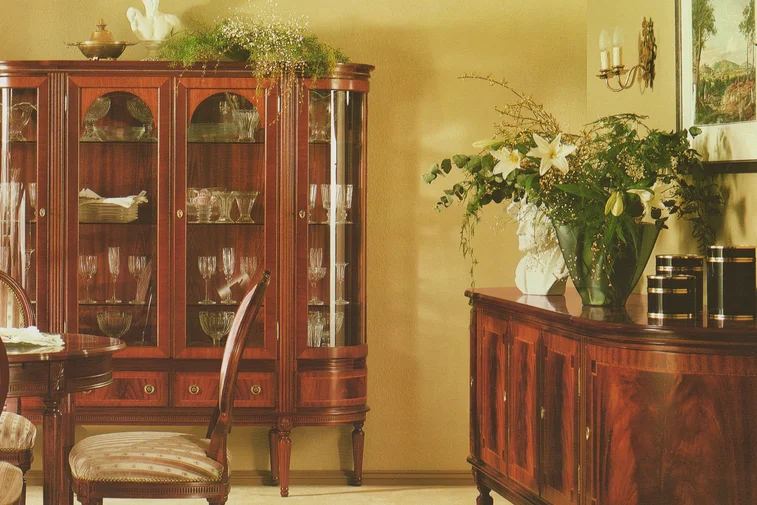
Living room shelves and display cabinets housed curated collections of items that adults deemed worthy of dusting weekly – everything from Hummel figurines and Precious Moments statues to commemorative plates and souvenir spoons. These collections represented years of careful acquisition through gift-giving occasions, vacation purchases, and mail-order subscriptions that delivered a new piece every month with automatic billing. The collections functioned as visual autobiographies, revealing the owner’s aesthetics, travel history, and willingness to invest in objects with dubious resale value but significant personal meaning.
Many collections were housed in special display cabinets with glass doors and interior lighting, creating museum-like presentations that elevated knick-knacks to heirloom status. Children understood these items existed in a special category of untouchable household objects – alluring but forbidden – with strict penalties for unauthorized handling or accidental breakage. The most serious collectors maintained documentation of each piece’s origin, manufacturer, and acquisition date, sometimes subscribing to specialty magazines that provided authentication information and previews of upcoming limited editions.
9. The Bowl of Fake Fruit
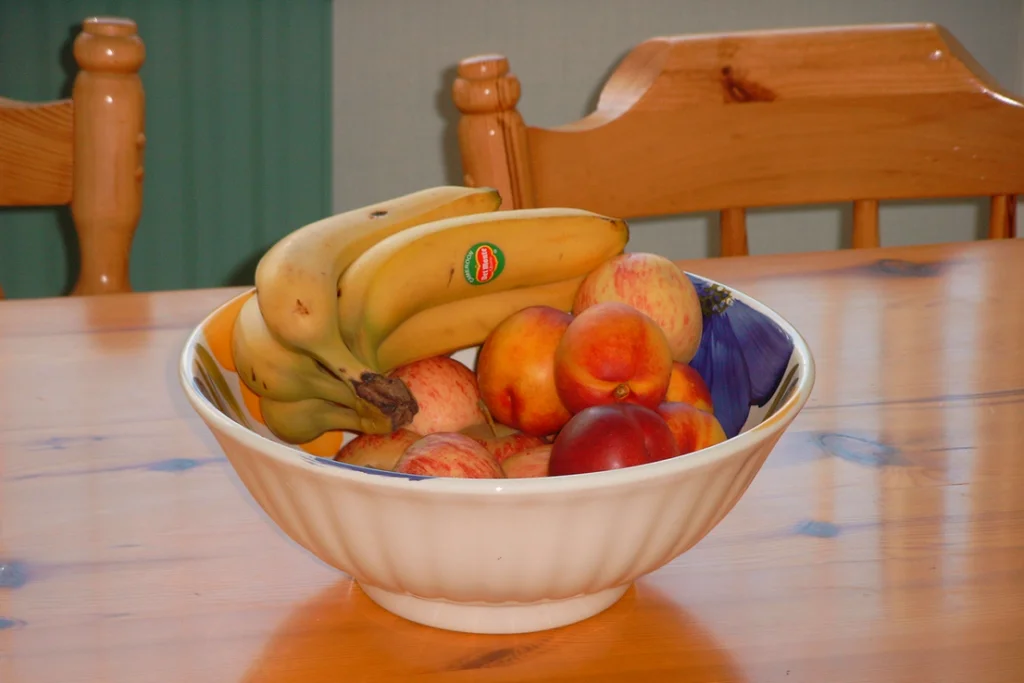
Decorative wooden or ceramic bowls filled with astonishingly unrealistic artificial fruit created still-life arrangements on coffee tables and dining room sideboards across America. These waxy apples, grapes perpetually on the verge of detaching from their clusters, and suspiciously perfect oranges gathered dust while providing a splash of color in otherwise neutral-toned rooms. The fake fruit represented a curious intersection of practicality (never spoils) and impracticality (completely non-functional) that somehow made perfect sense in mid-century decorating logic.
Some households elevated the fake fruit concept with related decorative items – ceramic vegetables, bread baskets with permanently fresh-looking rolls, or particularly ambitious arrangements featuring artificial cheeses and prepared foods. Children quickly learned the disappointment of discovering these tantalizing but inedible displays, while adults developed selective blindness to the fruit’s increasingly dusty appearance and fading colors. The fake fruit bowl served as a domestic symbol – suggesting abundance, hospitality, and good taste without the inconvenience of actual perishable food.
10. The Ashtray Collection

Before smoking indoors became socially unacceptable, living rooms featured elaborate ashtrays positioned within reach of every seating area – often decorative items in their own right made from cut glass, ceramic, or metals. These utilitarian objects were elevated to decorative status through unusual shapes, commemorative designs, or materials like onyx or crystal that signaled they weren’t ordinary smoking accessories but sophisticated home decor. Some households maintained impressive collections of souvenir ashtrays from vacations and business trips, creating inadvertent geographic displays of everywhere family members had ever visited.
The presence and positioning of ashtrays communicated important social information about household rules – formal ashtrays in public rooms meant smoking was acceptable, while their absence from bedrooms or kitchens might indicate restrictions. Even non-smoking households often maintained decorative ashtrays for guests, sometimes with visible signs of use despite the family’s claims that “no one in this house smokes.” The gradual disappearance of these once-ubiquitous objects from living rooms marked a significant cultural shift in American homes, with many beautiful ashtrays being repurposed as candy dishes or trinket holders rather than discarded.
11. The Decorative Plates
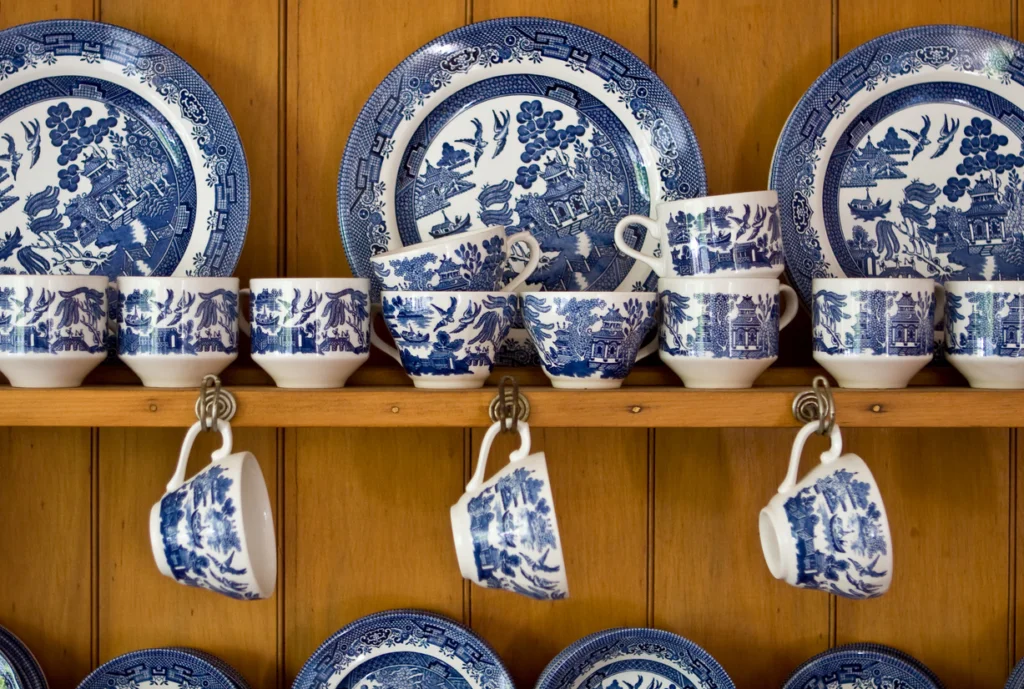
Walls that weren’t occupied by family portraits often featured decorative plates mounted in special holders – commemorating everything from royal weddings to America’s bicentennial. These circular wall hangings came from collector series with names like “Birds of America,” “Norman Rockwell’s Four Seasons,” or “Historic Lighthouses,” arriving via subscription services that automatically billed credit cards monthly. The plates transformed ordinary walls into gallery spaces showing the family’s refined tastes and commitment to preserving important moments through porcelain memorabilia.
Installing these plates required special brass hangers that hooked into invisible mounting hardware, creating the illusion that fine china was magically suspended on walls. Some enthusiasts created elaborate arrangements – plates in graduated sizes or thematic groupings – while others simply hung each new acquisition as it arrived, creating haphazard chronological displays. The plates served no practical purpose beyond decoration, yet many households invested significant sums in these dust-collecting wall hangings because they represented a socially acceptable form of art collection accessible to middle-class budgets.
12. The Macramé Creations
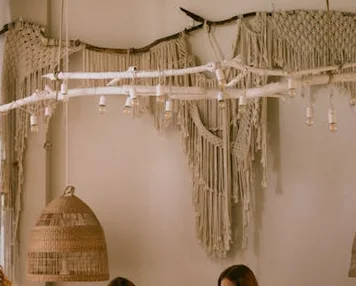
No 1970s living room was complete without at least one ambitious macramé project – usually a hanging planter holding a struggling spider plant or the ubiquitous decorative wall hanging featuring vaguely owl-shaped knotted designs. These handcrafted textile creations used various knotting techniques to transform ordinary jute or cotton cord into impressively complex home decor items that captured both the earth-tone aesthetic and DIY spirit of the era. The more elaborate pieces featured wooden beads, driftwood accents, or multiple colors of cord, announcing the maker’s advanced crafting skills.
Macramé’s popularity spawned countless adult education classes and craft books, with many living rooms displaying the graduated results of someone’s fiber arts journey – from simple plant hangers to elaborate room dividers with geometric patterns. These textured creations added warmth to rooms dominated by wood paneling and shag carpeting, while simultaneously collecting dust in ways that made them nearly impossible to clean. The distinctive knotted aesthetic became so ubiquitous that it functioned as visual shorthand for the 1970s, with macramé’s eventual disappearance from living rooms marking the definitive end of that decorative era.
13. The “Good” Candy Dish
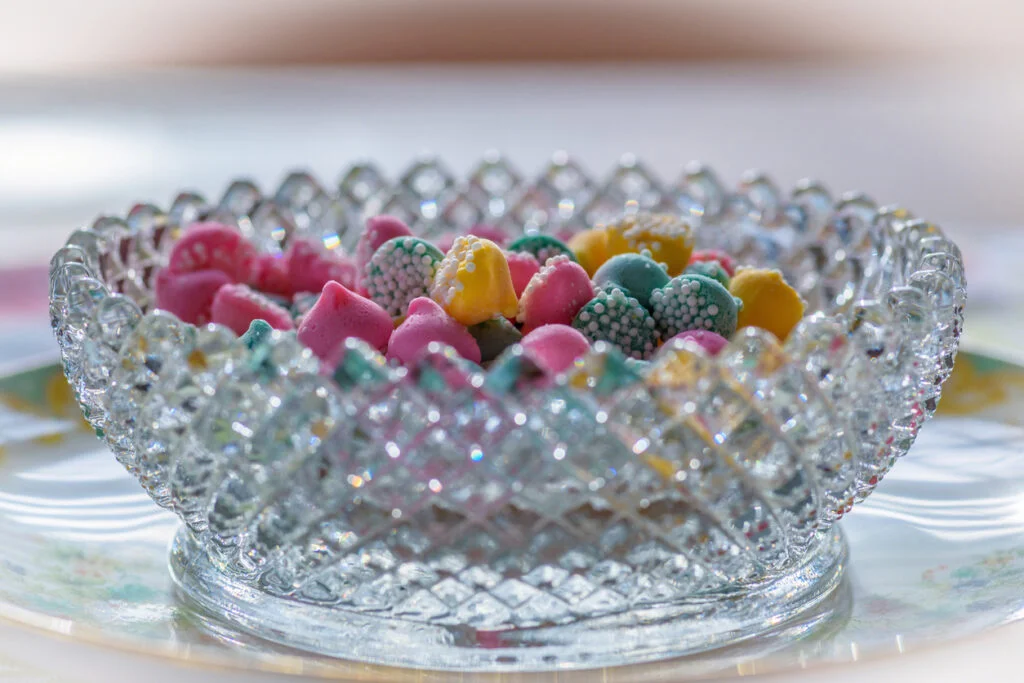
Every living room featured at least one decorative container filled with candies that existed in a mysterious state between decoration and actual food. These dishes – often made of cut crystal, milk glass, or ceramic – held candies that no one particularly enjoyed eating but which apparently couldn’t be discarded either: butter mints in pastel colors, hard candies permanently fused to their wrappers, or bridge mix that had been sitting out so long it had developed a suspicious white coating. The candy dish represented a specific type of hospitality – offering guests something that fulfilled the technical requirements of refreshment without being appealing enough to require frequent replenishment.
The contents of these dishes somehow transcended normal food safety rules, with the same candies sometimes remaining in place for years, occasionally rotated but rarely completely replaced. Children learned through bitter experience that these were not the same quality treats found in kitchen cabinets or holiday stockings, but rather a special category of semi-edible decor that adults pretended was provided for visitors’ enjoyment. The candy dish obligation was taken so seriously that even households where no one ate sweets maintained these offerings, understanding that living rooms without candy dishes risked being seen as unwelcoming or improperly appointed.
Those living rooms of yesteryear weren’t just spaces – they were carefully crafted presentations of family identity, preserved in a curious amber of formal furniture and questionable collectibles. Today’s more casual living spaces might be more comfortable and functional, but they lack the wonderful specificity of those rooms where plastic-covered sofas sat beneath macramé wall hangings while encyclopedias gathered dust in the corner. Perhaps what we really miss isn’t the uncomfortable furniture or the decorative ashtrays, but the shared cultural understanding of what made a home properly dressed for company – those unspoken rules that made every living room both uniquely personal and comfortingly familiar.


